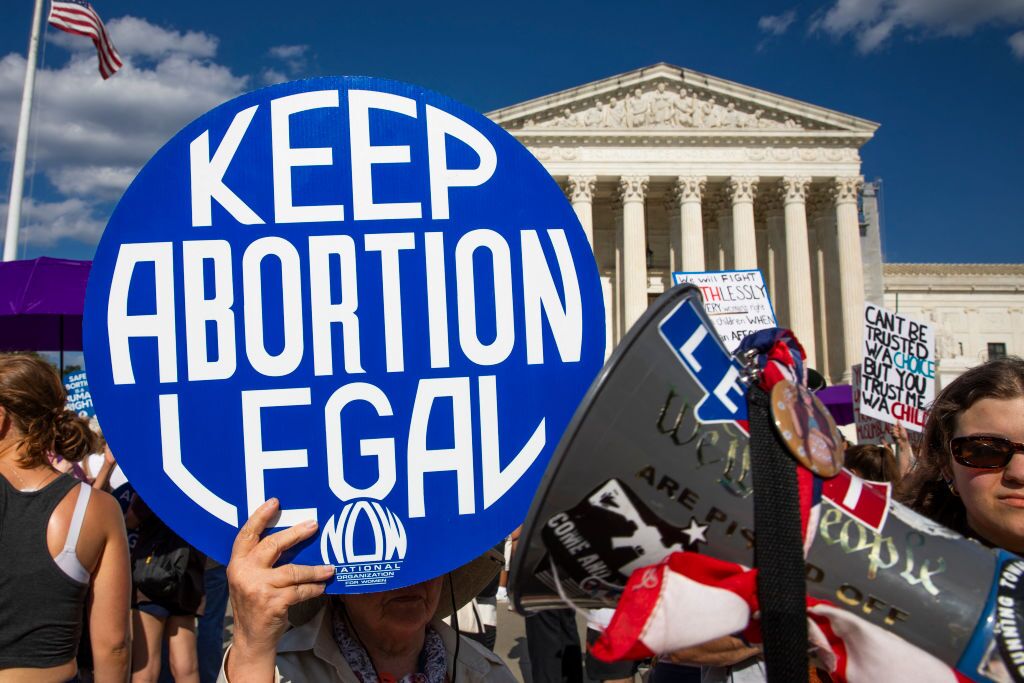The gap in women’s healthcare access is only going to stretch further and affect more of us in the years to come. We better make sure our voices are heard.
Originally published on The Contrarian under the headline, “A Warning Bell for All Women in America.”
The two of us, a doctor and a lawyer, join forces frequently to write about women’s health and advocate for increased medical research for midlife and menopausal care, causes that have never been prioritized by the federal government. This week’s Contrarian column is our effort to sound a warning bell for all women in America, young and old, in red states and blue states alike.
Women are more than half the population. We birth the future, bringing children into the world and caring for the elderly. We work. We pay taxes. We are voters.
And yet.
It is abundantly clear that among our nation’s leaders—in the White House and federal agencies, in Congress and state legislatures and in the courts—too many simply do not care if women die.
And more of us indeed will die. This is not hyperbole or Sen. Joni Ernst-style conjecture. The United States has entered into an era of state-sanctioned deprivation of women’s bodily autonomy that not only takes away the legal rights of girls and women—for the first time in history, daughters have fewer freedoms than their mothers and grandmothers have enjoyed—but compromises our collective health and well-being.
Reproductive care, of course, has been a central target, especially in the three years since the decision in Dobbs v. Jackson Women’s Health Organization revoked the federal right to abortion.
Most recently, President Donald Trump’s atrocious “big, beautiful bill,” which was signed into law on Independence Day, opens the door to a widespread care crisis by way of a provision that effectively defunds Planned Parenthood (blocked for now, at least temporarily). The provision plans to cut off the organization’s federal Medicaid funding for at least one year, a move that could result in the closure of as many as 200 clinics and the denial of basic medical care for over one million patients.
This attack on Planned Parenthood is part of a one-two punch, following the U.S. Supreme Court ruling in Medina v. Planned Parenthood South Atlantic, which determined that Medicaid patients don’t have a right to freely choose their own medical provider if that provider happens to be Planned Parenthood.
In both scenarios, women can now be deprived of lifesaving care like cancer screenings and a wide array of reproductive, as well as general health services, including diabetes screening, testing for sexually transmitted infections, birth control and menopause treatments.
Women’s health encompasses the totality of her lifespan, not just her reproductive years. … Less access to healthcare … will affect antiabortion and pro-abortion women equally.
None of this is happening in a vacuum but rather is part of a quickly deteriorating medical landscape. The United States currently faces a doctor shortage, with OB-GYNs affected severely. By 2030, we can expect to be down more than 5,000 OB-GYNs nationwide because of early retirement and burnout alone. Those left will be practicing with danger hanging over their heads.
More than half of medical students today are female and of reproductive age. Why would they choose to train and practice in a state that not only restricts their ability to do their jobs but also limits their own ability to access necessary care?
Nor is it an accident that states with the most restrictive abortion laws most acutely feel the imminent effects of the emerging shortage. In the first year after Dobbs, 42 percent of surveyed clinicians who provided abortions in states with near-total or six-week bans relocated to another state, according to the Journal of the American Medical Association. Nearly all of them went to states that had not imposed a ban. In comparison, just 9 percent of those who practiced in a state that allowed abortion relocated to another state.

One of the inevitable results of this mass exodus is the emergence of medical deserts, which are only bound to grow. These deserts are more prevalent in states with restrictive abortion policies, which also happen to largely overlay with the map of the old Confederacy and current-day red states. This dearth of care is as much a calamity for maternal health as it is for abortion access.
Here is what it means for all of us: Women’s health encompasses the totality of her lifespan, not just her reproductive years. About one in four women in this country will want or need an abortion in her lifetime. Eighty percent will bear at least one child. One hundred percent will need cancer screening and counseling for menopause.
Less access to healthcare—either by cutting Medicaid benefits or discouraging doctors from practicing in restrictive states—will affect antiabortion and pro-abortion women equally. This is about far more than abortion. There will be more maternal deaths. There will be more deaths from cervical and breast cancer. More women will die from complications of cardiovascular disease and diabetes. There will be more suffering from infertility, endometriosis and fibroids.
The gap in access is only going to stretch further and affect more of us in the years to come. Does anyone in power care? We certainly do. And we better make sure our voices are heard. All of our lives depend on it.
Great Job Jennifer Weiss-Wolf & the Team @ Ms. Magazine Source link for sharing this story.





